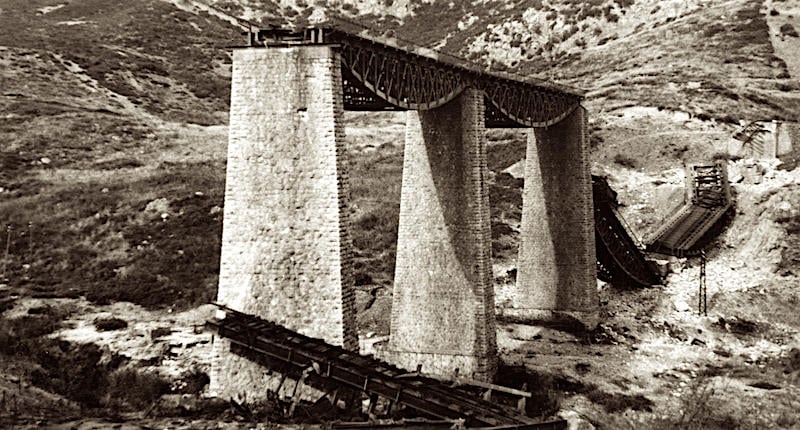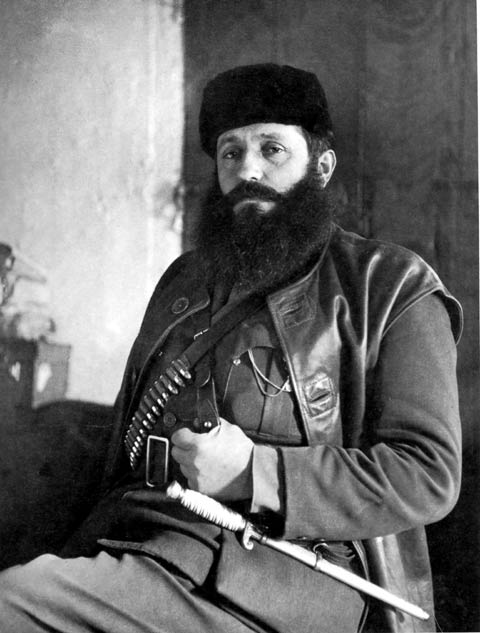
The blowing up of the Gorgopotamos railway bridge on November 25, 1942 still stands as the greatest and most courageous moment of resistance to the German occupation of Greece during World War II.
On September 29, 1942, a group of twelve British commandos headed by Colonel Eddie Myers parachuted into the Giona mountains of central Greece.
Among them was Themistocles Marinos, a Greek, and an unknown Cypriot who went by the code name of “Giannis.”
Their task was to get in touch with members of the Greek resistance, and implement with them a daring scheme dubbed “Operation Harling,” a plan conceived at Allied Headquarters in Cairo.
The plan to destroy Gorgopotamos Bridge
The project called for the blowing up of one of the three bridges over the Papadia, Asopos and Gorgopotamos rivers. They were all major bridges in the region.
But one of them, the Gorgopotamos Bridge, carried the crucially-important railway line between Thessaloniki and Athens.
In the next few days, Myers and his men surveyed all three possible sabotage areas and found that — luckily enough — the Gorgopotamos bridge was also the easiest target.
It was the only reliable route to the ports of southern Greece, and its destruction was intended to cause the interruption of supplies to the German forces under General Erwin Rommel in North Africa.
However, they had to secure the support of the different Greek resistance groups for the operation to succeed.
On November 19, Myers hurried to meet Napoleon Zervas, leader of the National Republican Greek League (EDES) in Mavrolithari, Fokida.
Greece’s resistance during World War II

The next day, Aris Velouchiotis, the leader of the Greek People’s Liberation Army (ELAS), met with the British commandos.
All parties agreed that the Gorgopotamos bridge was the best sabotage target.
Three days later the site was surveilled by a joint guerrilla group, and on November 22 the plan for blowing the bridge on the night of November 25th was finalized.

Gorgopotamos Bridge was guarded by one hundred Italians and five German soldiers, all with heavy machine guns.
Its neutralization would require not only swiftness but an enormous amount of explosive material.
The resistance team now consisted of one hundred fifty men, with eighty-six from ELAS, fifty-two from EDES plus the twelve British commandos.
The plan was for the Greeks to eliminate or distract the guards while the British placed the explosives along the bridge.
At 11:07 on the night of November 25, the assault on the guards defending both ends of the bridge began.
Everything went according to the meticulous plan that had been drawn up. At 1:30 in the morning of November 26 a section of the bridge was blown up and the second section soon followed, plunging into the river below at 2:21 AM.
At the same time, a train full of Italian soldiers that had been sent to Gorgopotamos to fend off the attack was successfully halted by the guerrillas.
By 4:30 in the morning, the last guerrillas had finished their operations and they met at the rendezvous in Kalyvia to compare stories.
Of the 150 men of the resistance who fought in Operation Harling, only four were injured while the bridge guard of Italian and German soldiers had lost 20 to 30 men.
Destruction of Gorgopotamos one of the greatest acts of sabotage
However, several days later, nine Greek patriots were publicly executed by German occupation forces at the site of the damaged bridge in retaliation for the heroic deed.
The blowing of the Gorgopotamos bridge was one of the greatest acts of sabotage during World War II.
It won the admiration of all occupied Europe at the time and gave courage to the Greek people during the harsh years of occupation.
Its impact on the North African front was limited, however, because by the time the bridge was destroyed, the Germans had lost the Battle of El Alamein.
Rommel had taken what was left of his forces and moved west, rendering the supply chain from Greece less important.
The act was understandably a huge morale boost inside the Greek resistance. But there was another major symbolic significance behind Gorgopotamos operation.
It was probably the only moment in modern Greek history where leftists (ELAS) and rightists (EDES) worked together for the good of the country.
In 1982 the administration of Andreas Papandreou established the anniversary of the blast of the Gorgopotamos Bridge as a day to officially celebrate the people of the National Resistance.
See all the latest news from Greece and the world at Greekreporter.com. Contact our newsroom to report an update or send your story, photos and videos. Follow GR on Google News and subscribe here to our daily email!



